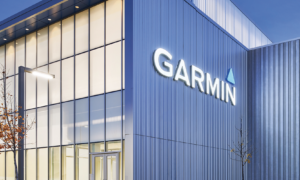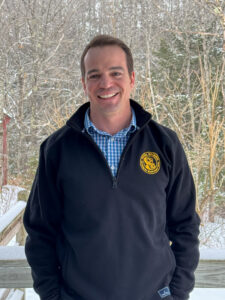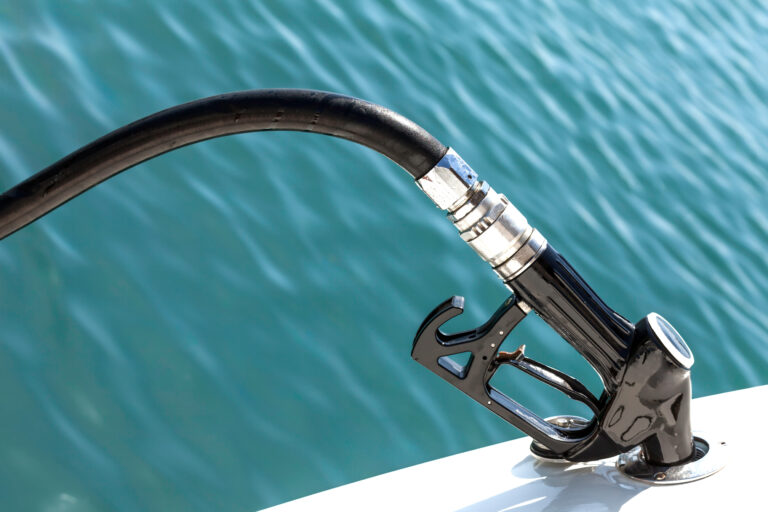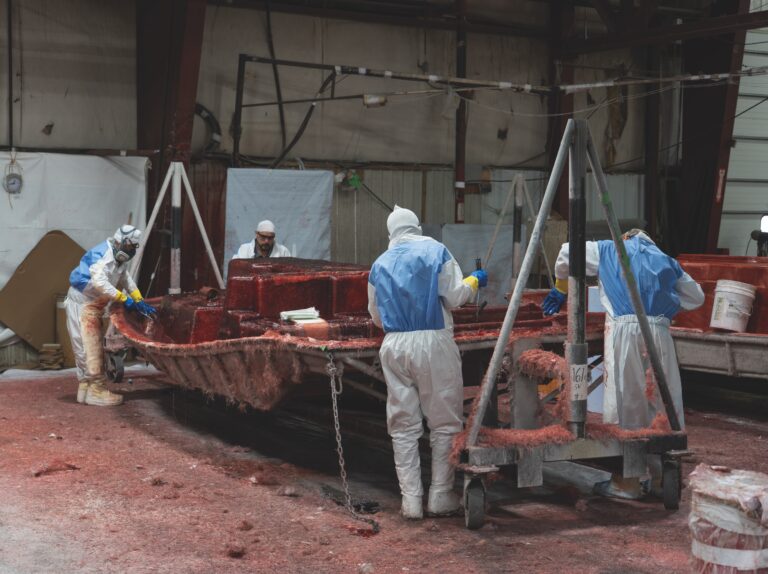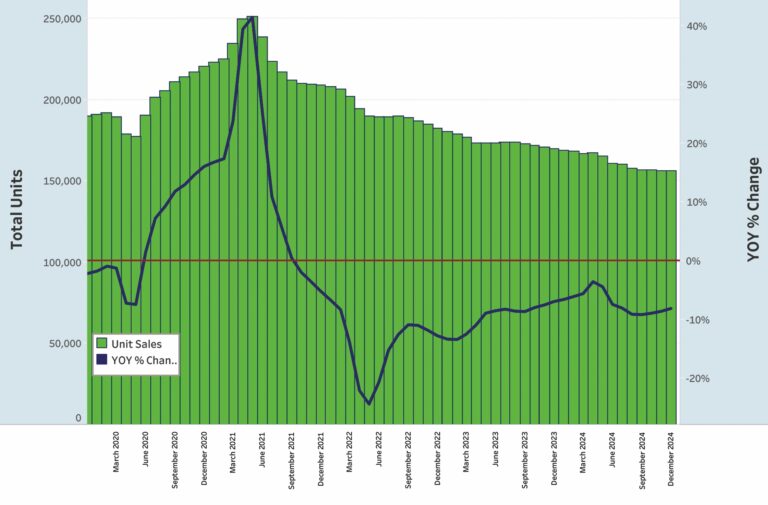Onancock, Va., has been welcoming every kind of boater, from steamship crews and watermen to cruisers, since its founding in 1680. The place is only about a square mile in size and home to around 400 families, but it’s a great location, a couple of miles from Chesapeake Bay by way of Onancock Creek. It’s a town with a storied maritime history, for sure, but it isn’t what most people think of when they hear “multimillion-dollar federal grant program for transient boaters.”
As it turns out, Onancock is a shining example of precisely the type of changes the Boating Infrastructure Grant program was created to make possible for transient boaters and the communities they visit. The BIG program — whose annual application deadline is usually around September — began in 1998 after a congressional survey of 12,000 marinas found that existing tie-up facilities weren’t satisfying demand. BoatUS was part of a coalition that secured initial authorization for the program, which has since doled out $263 million to build safe-harbor facilities for transient boats longer than 26 feet, for stays of up to 15 days. The program supports such infrastructure as piers, breakwaters, floating docks, bulkheads, mooring buoys, restrooms, showers, laundries and more.

Offering those types of services attracts transient boaters, who in turn spend money in local shops and restaurants, creating a powerful economic engine. “It’s like what an anchor store used to be in a mall,” says Brad Gunn, who helps to review BIG applications as a national lead for boating grant programs with the U.S. Fish and Wildlife Service. “Give the public a way to have the boaters come in and go ashore. We see a lot of funds going to the big players in the major stopovers and destinations, but in some places, they’re in just the right place to really fill a need, including being a safe harbor along someplace like the Atlantic Coast.”
So it was for Onancock, where town officials decided, about a decade ago, that they wanted more transient traffic — because the average boater spends five times what the average visitor spends when arriving by car. “From a tourism and economic point of view, transient traffic is better for our economy,” says town manager Matt Spuck.
After putting in a floating dock, the town submitted its first of what would become a half-dozen BIG applications. It kept winning grants, allowing for a rebuild of the harbormaster house into a modern transient facility with laundry, showers and restrooms. The town also used BIG money to help install fuel and pumpout stations.

“Now we have a great facility for transient boaters. They can walk right from their boats to our seven restaurants, our artisans — it’s a neat destination,” Spuck says. “We have people coming from up and down the coast, from New Jersey, the Carolinas.”
BIG program administrators are looking for more applicants from places like Onancock and are urging applicants to start the process for next year’s deadline now. “You don’t have to be a Seattle to get these grants,” says Preston Smith, marina programs manager with the Virginia Department of Health. “Sometimes we have years when it’s competitive, and some years it’s not competitive at all. You may be the only boating facility that applies for the grant fund in your state.”
Tips From the Pros
BIG program funding comes from a federal pool that’s built on excise taxes from fishing equipment and trolling motors, customs duties and other things that boaters pay for on a regular basis. Every year in May or early June, a federal notice is sent out for the BIG funding opportunity, with two tiers of applications in the mix.
Tier 1 allows a state agency to apply for as much as $200,000 to disburse to third parties, including public and private marinas. Typically, there are 30 to 40 grant winners in the Tier 1 program each year, Gunn says, but not for the full $200,000 amount. The money is often broken into chunks for multiple projects within a state, everything from shore power pedestal renovations to mooring-field installations.

Recipients can’t apply for BIG grants themselves; they have to apply with help from the correct state agency, which can be found online through the States Organization for Boating Access (sobaus.org). The reason for this layer of oversight is that after BIG funding is awarded at the federal level, it becomes the state’s responsibility to ensure that the final recipient is following the program rules, to provide services for transient boaters.
States have different risk tolerances for partners they will consider, Gunn says. And if state officials don’t like what they’re seeing after a grant is awarded, they can withdraw the agreement and return the funds to the federal government for future transient-boater uses.
“There was a marina in my state that decided to close the docks for private parties, and that’s a violation,” says Scott Croft, vice president of public affairs for BoatUS. “You have to keep the dockage open for 20 years, so you can’t take this money and turn the slips into private slip rental. The state ensures compliance, and the state has the ability to sanction.”
In addition to the Tier 1 program, there’s a nationally competitive Tier 2 program. Here, too, applications must come through state agencies, but the amount of money is larger, up to $1.5 million. “We usually get 20 to 30 Tier 2 applications a year,” Gunn says, adding that around 10 of them are typically funded. “They go through a review panel where they’re scored on various criteria, including how well they meet a need for the transient boating public.”
With Tier 2, BIG applicants are up against the nation’s top boating destinations, and working with state agencies to home in on precisely how the money will be used to help transients is key. Scott Meister, the Southeast region BIG coordinator for the U.S. Fish and Wildlife Service, says that to have the best chance, “it’s imperative, essential, that marina owners and operators identify and start building relationships with their boating agency.”
Each state agency has internal deadlines for applications that are earlier than the September due date to the federal government, Meister says. In South Carolina, for instance, the deadline is July 1. “So start shaking hands and making friends now because you’ll have a year to develop these relationships,” he says.
Next is ensuring that the application specifies how the proposed project will help recreational, transient boats that are 26 feet or longer and are staying for 15 days or less. “If you can’t check all three of those boxes, you’re not eligible,” Meister says. “A lot of times we hear about all the great things the program will do for the marina. The program doesn’t care about expanding the marina. It cares about access for those transient boaters.”
The biggest mistake that applicants make, experts say, is failing to focus on the program’s specific requirements. “Somebody will submit a $1.2 million grant that looks really great, but $20,000 of it doesn’t meet the requirements, so the application gets downgraded,” Croft says. “Knowing what you can put in, and knowing the competitiveness of it, this is what your state agency can help with.”
Another way to increase an application’s chances is to offer to exceed the minimum required 25 percent of matching funds for the project. Some applicants, Meister says, offer to pay as much as 50 percent of a project’s costs. “A savvy grant writer is going to maximize that cash investment that the applicants can be bringing to the table,” he says.
Cash Makes a Difference
Smith, the Virginia official who helps his state’s applicants apply for BIG funding, says winning a grant can be a game-changer. “If you talk about a small town like Cape Charles in Virginia, and you have a group of boaters coming in, and each of them is buying food and drinks in those towns — that makes a difference to those people, to those communities,” he says.
That’s exactly what happened in historic Yorktown, Va. It has long been a tourist destination but didn’t have space for transient boats. Starting in 2005, York County decided to change that. “We were looking for a way for transient boaters to connect with our historic area,” says Darren Williams, waterfront operations and event manager for the county.
An infusion of BIG money created what is now 1,600 feet of linear dockage on floating piers. Additional BIG grants helped to pay for restrooms, showers, and security gates and cameras. “Our next thing is washer and dryer services for transient boaters,” Williams says. “We’re trying to make the experience a one-stop shop, a place where people can come in and get off the boat and do everything.”
In 2021, the Yorktown docks had 317 overnight stays, along with temporary dockage for another 689 day boaters, from May through September alone. “Since we established this dockage, we are seeing people from all over the world,” Williams says. “We’ve had Great Loopers. We’ve had people from as far away as Australia. They’re eating in our restaurants. They’re shopping in our stores. It’s been a great economic driver.”
This article was originally published in the September 2022 issue.




